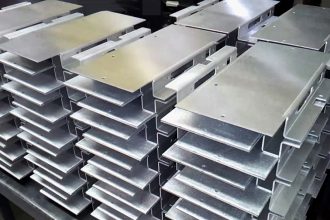The Scientific Research and Experimental Development (SR&ED) Tax Incentive Program, managed by the Canada Revenue Agency (CRA), is a crucial benefit for Canadian businesses engaged in innovative research and development (R&D). This program is designed to encourage companies to invest in R&D activities by offering tax credits and refunds. However, navigating the complexities of the SR&ED program can be challenging for many businesses. Understanding its requirements and optimizing your claim can significantly enhance your financial resources, allowing you to reinvest in your projects and drive further innovation.
Understanding the SR&ED Program
The SR&ED Tax Incentive Program provides financial support to businesses involved in R&D activities aimed at achieving technological advancements or solving scientific or engineering problems. This program encompasses various forms of support, including tax credits on qualifying expenditures for wages, materials, and overhead costs associated with R&D activities. To qualify, your R&D activities must meet specific criteria: they must involve scientific or technological uncertainty, and the activities should aim to achieve a technological advancement or improve upon existing technologies.
Eligibility for SR&ED is based on the nature of the work being conducted, not the type of business. This means that whether you are a small startup or a large corporation, if your projects involve systematic investigation or experimentation in a field of science or technology, you may be eligible for tax credits. It’s essential to keep detailed records of your R&D activities and expenditures, as the CRA requires comprehensive documentation to process your claim. This includes project descriptions, technical reports, and financial records that clearly demonstrate how your R&D efforts meet the program’s criteria.
Preparing and Submitting Your SR&ED Claim
Effective preparation and documentation are key to a successful SR&ED claim. Start by identifying and categorizing all activities related to R&D, ensuring they align with the program’s definition. Maintain detailed records of the R&D process, including project objectives, challenges encountered, and the methods used to address these challenges. Additionally, keep accurate financial records of all expenditures associated with your R&D activities. Properly documenting these elements not only facilitates the preparation of your claim but also strengthens its validity if subjected to an audit.
When it comes to submitting your claim, it is crucial to be thorough and precise. The claim process involves filling out specific forms and providing supporting documentation. This includes the T661 form, which details your R&D activities and expenditures, and the relevant sections of your corporate tax return. Ensure that all information is accurate and aligned with the records you have maintained. Common mistakes, such as incomplete documentation or misclassification of expenditures, can lead to delays or rejections of your claim. Therefore, consider seeking professional advice or assistance from a consultant who specializes in SR&ED claims to ensure that your submission is comprehensive and compliant with CRA requirements.
Maximizing the Benefits of the SR&ED Program
To fully leverage the SR&ED program, businesses should focus on strategic planning and continuous improvement of their R&D processes. Understanding the nuances of the program can help you maximize the tax credits and refunds you receive. For instance, staying updated on changes to the program’s regulations and eligibility criteria can help you adjust your R&D strategies accordingly. Engaging with SR&ED experts or consultants can provide valuable insights into optimizing your claims and identifying potential areas for improvement.
Additionally, maintaining a culture of innovation within your organization can enhance your eligibility for SR&ED benefits. Encourage your team to document all aspects of their R&D work meticulously and to focus on projects that align with the program’s criteria. Regularly reviewing and refining your R&D practices not only helps in maximizing the benefits from the SR&ED program but also fosters a continuous cycle of innovation and improvement within your business. By staying proactive and informed, you can effectively navigate the SR&ED Tax Incentive Program and utilize it as a powerful tool for advancing your technological capabilities and driving your business forward.
The Tax Incentives Definition and Its Impact on R&D Strategy
Understanding the tax incentives definition within the context of the SR&ED program is essential for businesses looking to optimize their R&D investments. Tax incentives, broadly speaking, are financial benefits offered by governments to encourage specific activities that are deemed beneficial to the economy or society. In the case of SR&ED, these incentives are aimed at stimulating innovation and technological advancement by offsetting the costs associated with research and experimental development. By clearly defining and understanding what qualifies as an eligible R&D activity and expenditure, businesses can better align their projects with the criteria set forth by the CRA. This alignment not only ensures compliance but also enhances the potential financial return from the tax incentives. Businesses that grasp the intricacies of the tax incentives definition can more effectively integrate these benefits into their overall R&D strategy, making informed decisions that drive growth and innovation. Ultimately, a comprehensive understanding of these incentives empowers businesses to fully capitalize on the available support, fostering a more dynamic and forward-thinking approach to research and development.
Common Missteps in SR&ED Claims
Navigating the SR&ED Tax Incentive Program can be complex, and businesses often encounter pitfalls that can jeopardize their claims. One common mistake is failing to adequately document R&D activities and expenditures. Insufficient or incomplete records can lead to difficulties in substantiating your claim during the review process. Additionally, some businesses incorrectly classify activities or expenses, either by misunderstanding what qualifies as eligible R&D work or by misapplying the program’s criteria. This misclassification can result in reduced tax credits or outright rejection of the claim. To avoid these issues, it is crucial to maintain detailed, organized records and to clearly document how your activities meet the SR&ED criteria. Engaging with an SR&ED consultant can help identify and rectify potential errors before submission.

Leveraging SR&ED for Long-Term Business Growth
Beyond immediate financial benefits, effectively leveraging the SR&ED program can contribute to long-term business growth and success. By maximizing your claims, you free up resources that can be reinvested into further R&D projects, fostering a cycle of innovation and development. This reinvestment not only enhances your company’s technological capabilities but also strengthens its competitive position in the market. Additionally, a robust SR&ED claim can bolster your company’s financial stability, making it easier to attract investors or secure funding for future projects. By integrating SR&ED tax incentives into your broader strategic planning, you can create a sustainable model for growth that capitalizes on both short-term benefits and long-term advancements.
Navigating the SR&ED Tax Incentive Program requires a thorough understanding of the program’s criteria and careful management of your R&D activities and documentation. By familiarizing yourself with the tax incentives definition, avoiding common pitfalls, and leveraging the program for long-term growth, you can effectively harness the financial benefits available. This strategic approach not only supports your current innovation efforts but also positions your business for future success.















